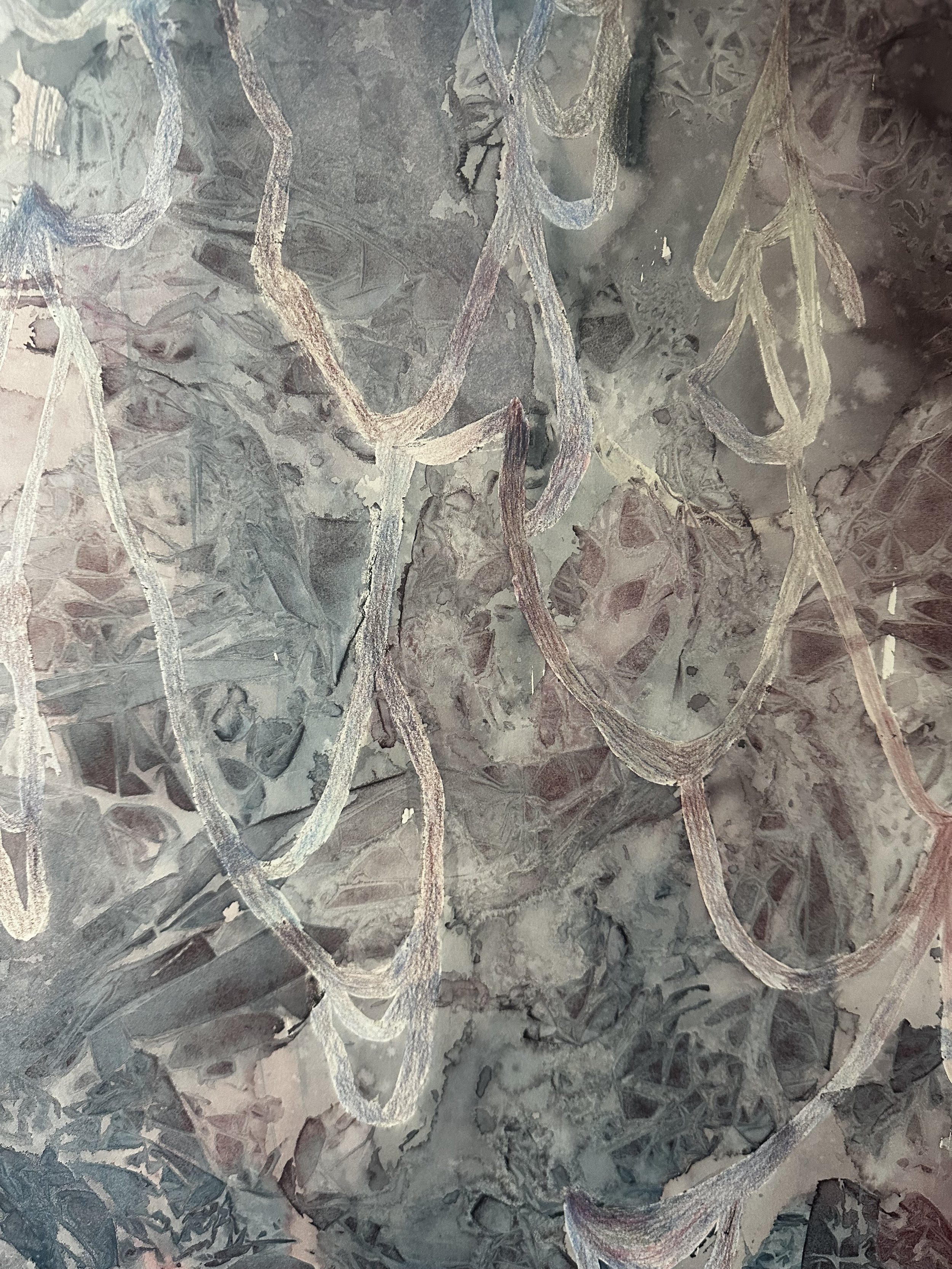Watercolour (Part 2)
One of my first "GladWrap" paintings.
Watercolour is a challenging medium. I’m not so interested in mastery per se, but in exploration and play. Seeing what it can do and what happens. If the results are good, then that is a bonus, but I don’t hold any expectations. When my watercolours fail, I just go over them with acrylic and pastel, creating another, different work with some of the watercolour showing through.
Watercolour is more immediate than oil painting, so ready to take my mood. So powerful, so intense. But also delicate, and subtle.
Watercolour was the medium that brought me back to painting and it continues to reward me with its capacity for exploration and experiment, without the sense of heaviness and commitment that sits with painting. There’s a lightness to watercolour that helps me feel free.
Recently my watercolour has developed along an unexpected pathway.
The latest pieces have become experiments in process. I mask a shape, then paint loosely across the paper, then apply plastic wrap. When the pigment dries, the wrap creates a complex and delicate texture, the masked shape holding the white of the paper.
This complex method started when I borrowed a book on watercolour from my local library. This handbook detailed the author’s watercolour process using plastic wrap on wet pigment to create unusual textures.
I played around with this method and discovered that I loved the effects. I just needed to find the shapes that worked with this complex, intricate, and “accidental” texture. I couldn’t control the effects of the plastic wrap, but I could control the colours I used and the shapes where I blocked the pigment through masking.
As I developed this method, I started by drawing some shapes on the paper (I used Arches smooth watercolour paper 300 GSM stretched on gator board) and enclosed the clingwrap texture in these.
This eventually developed to the point where I was masking shapes with masking fluid, flooding the stretched paper with watery washes, then applying lots of clingwrap. I waited overnight for the washes to dry, then removed the clingwrap.
I used an eraser to get rid of the mask, and as the final part of the process, I used pencil to work back into the masked areas so that they were still visible, but only subtly distinguished from the other areas across the paper.
Below is a little video showing how this works.
And the end result:
The end result of the process with coloured pencil worked back into the masked areas.

